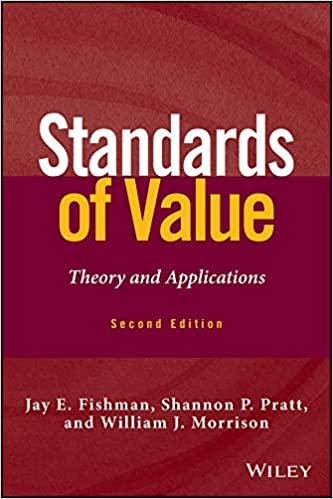Question
CASE STUDY: Jaderson, age 33, and Natalia, age 35, are married and have two children, ages five and seven. Jaderson works for the local township
CASE STUDY:
Jaderson, age 33, and Natalia, age 35, are married and have two children, ages five and seven. Jaderson works for the local township earning $85,000 per year ($57,790 after taxes and deductions toward the Canada Pension Plan and Employment Insurance). After staying home for a number of years to care for the children, Natalia is scheduled to return to work part-time. She expects to earn $40,000 in gross annual salary, which amounts to $29,841 after taxes, CPP and EI deductions. They estimate that annual childcare expenses will increase by about $5,000 per child, for after-school programs, summer camps and extra-curricular activities, until each child turns 14. Jaderson and Natalia are in good health, but there is a history of breast cancer in Natalias family.
Jadersons employee benefits include the following: life insurance in the amount of two annual salaries; 80 percent of prescription drug coverage; 80 percent of dental care coverage of up to $5,000 per year; short-term disability coverage equaling three-quarters of gross salary (non-taxable) for the first 110 days, following a waiting period of 10 days; and long-term any occupation disability coverage equaling two-thirds of his gross salary (non-taxable), payable after 120 days, until age 65. The benefits keep pace with changes to the consumer price index. Jaderson wants to ensure that his family is protected, should he become disabled and unable to work. Natalias part-time employment makes her ineligible for benefits.
The family lives in a condominium whose value is estimated at $650,000, with an outstanding mortgage of $275,000. Their mortgage and condominium payments are $1,700 and $300 per month, respectively (including creditor insurance), with a remaining amortization of just under 20 years. Annual property taxes are $4,000. They also have a $16,000 car loan with annual payments of $4,800, and a remaining term of three and a half years. They spend $6,000 per year on car insurance, fuel and maintenance for their car, and Natalia expects to pay $2,400 annually for public transit once she returns to work. Their lifestyle expenses amount to $15,000 per year. Currently, the couple contributes $2,500 annually to a Registered Education Savings Plan (RESP) for each child and are on track to meeting their goal of helping finance their childrens education when the children turn 18.
The couple has $2,000 in their chequing account and $35,000 in a family RESP, of which $20,000 is allocated for the seven-year-old, and $15,000 for the five-year old. They also have $6,700 in a spousal Registered Retirement Savings Plan (RRSP) in Natalias name. Jane, an FPSC Level 1 Certificant in Financial Planning, has advised Jaderson to begin contributing $400 to the spousal plan per month to help meet their retirement goal. The couple lives within their means and pays their credit cards in full each month.
Jaderson and Natalia would like to ensure that they can maintain their current lifestyle until age 65 and remain in the family home without having to return to work if either of them should die prematurely. Survivor expenses are estimated at 90 percent of their current lifestyle expenses. They also want to ensure that they can provide for their childrens postsecondary education. They expect that a four-year program will cost $10,000 per year in todays dollars, with education costs rising by an annual five percent. In addition, they would like to continue to save for their retirement until age 65, and ensure they have enough insurance to leave each child $100,000 upon the death of the surviving spouse.
They estimate that $20,000 will be needed for funeral expenses, and $25,000 for emergencies. If Jaderson were to die, Natalia would need to increase her RRSP contributions to $1,000 per month to meet her retirement goal. Based on the couples risk tolerance, they prefer to maintain an investment portfolio equally balanced between equities and fixed income. Investment-related expenses are estimated at an annual 1.6 percent (two percent for equity mutual funds, and 1.2 percent for fixed-income mutual funds). Any tax liability upon death will be paid from their estate.
Question #1
Question #1: Prepare a Net Worth Statement (10 Marks) and Cash Flow (20 Marks) for Jaderson and Natalia. Cash flow Monthly & Annual. (30 marks total)
Step by Step Solution
There are 3 Steps involved in it
Step: 1

Get Instant Access to Expert-Tailored Solutions
See step-by-step solutions with expert insights and AI powered tools for academic success
Step: 2

Step: 3

Ace Your Homework with AI
Get the answers you need in no time with our AI-driven, step-by-step assistance
Get Started


